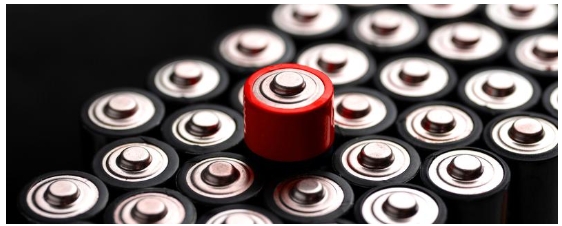As a portable power source, batteries are a cornerstone of convenience in today’s industrialized societies. The two types of batteries commonly mentioned today are lithium-ion (Li-ion) batteries and the batteries used in electric vehicles.
Electric batteries have increased the prevalence of motors and the lack of wires in our lives. Electric batteries retain the electrical energy they capture and release it by converting other forms of energy. As a source of portable electrical power, batteries are a cornerstone of convenience in today’s industrialized societies. Innovations that improve the efficiency of electrical energy management will determine what this convenience and sustainability will mean in the future.
What led to the invention of the electric battery?
All chemical reactions basically revolve around the rearrangement of electrons in bonds between atoms. The connection between this fact and the electrochemical cells that were the forerunner of the modern battery was clearly demonstrated in an experiment conducted by Luigi Galvani in 1780. Galvani touched two different metal plates and then touched them at the same time with a frog’s leg. He noticed his leg twitching but couldn’t pinpoint the cause.
The next major innovation of the pre-industrial era on this front was the electrical edifice built by Alessandro Volta in 1800. This cell consists of alternating plates of copper and zinc, separated by sheets of paper soaked in salt water. Volta found that this configuration could produce a constant current over a period of time, but, like Galvani, he could not explain why.
British chemist John Daniel improved on Volta’s design: he filled a copper vessel with copper sulfate and placed it inside a pottery vessel containing a zinc electrode contained within sulfuric acid. This more complex setup can produce current for longer periods of time. Then, in the early 1800s, Michael Faraday understood why these cells worked the way they did, and named their various components (anode, cathode, electrolyte, etc.).
What is an electric battery?
A voltaic or galvanic cell uses redox reactions to generate an electric current. The cells consist of two half cells. Each half-cell consists of a metal electrode immersed in an electrolyte of that metal, for example a zinc electrode in zinc sulfate and a copper electrode in copper sulfate. The two metal electrodes are connected by a wire, and the two electrodes are connected by a salt bridge (a material that conducts ions while remaining electrically neutral).
In a zinc half cell, zinc ions (Zn2+) in the electrode dissolve in zinc sulfate, freeing two electrons in the electrode. In the copper half-cell, the opposite happens: copper ions (Cu2+) from copper sulphate deposit on the electrode, which now requires two electrons. Therefore, the wire connecting the electrodes will transfer two electrons from the zinc to the copper electrode. Likewise, the salt bridge connecting the electrolytes allows Zn2+ and sulfate (SO42-) ions to meet and exchange electrons. Since the wire connecting the zinc to the copper electrodes carries electrons, an external circuit connected to it can attract the flow of electrons for various applications.
Batteries are collections of these cells.
What are the types of batteries?
The two types of batteries commonly mentioned today are lithium-ion (Li-ion) batteries and batteries used in electric vehicles (EV). The Li-ion battery won the 2019 Nobel Prize in Chemistry for the developers of its basic principles, a testament to the revolutionary impact it has had in the 20th and 21st centuries. This battery is a galvanic and electrolytic cell. A voltaic cell converts chemical energy into electrical energy. An electrolytic cell converts electrical energy into chemical energy. Therefore, a battery capable of doing both can be recharged.
Hydrogen fuel cells are also attracting great interest today. At the anode, the catalyst splits the hydrogen into protons and electrons. Electrons flow through the external circuit and protons flow through the electrolyte – both towards the cathode. At the cathode, molecules react with oxygen in the air to produce heat and water. A cell like this will operate as long as hydrogen is supplied, and is expected to become an important part of the hydrogen economy.
In January 2023, the Indian government approved the Rs 19,744-crore National Green Hydrogen Mission, which aims to make India a “global hub” for green hydrogen utilization and export.
For more information visit at https://happenrecently.com/zepto/?amp=1

